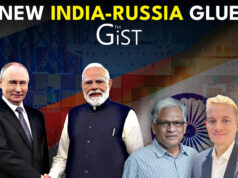The Malacca Strait, a narrow stretch of water connecting the Indian Ocean with the South China Sea, has re-emerged as one of the most vital choke points in global geopolitics, says Nilathan Niruthan, Director of the Centre for Law and Security Studies in Sri Lanka.
A choke point, he explains, is a small area that controls access to a much larger one. From the Strait of Hormuz to the Suez Canal, these bottlenecks play a decisive role in global trade and energy flows. The Malacca Strait is among the most critical: about a quarter of the world’s maritime trade passes through a channel in places less than three kilometers wide.
Niruthan argues that the strait’s importance has only grown in recent months. First, it has become central to India’s strategic leverage. The Andaman and Nicobar Islands sit almost at the “mouth” of the strait, giving India a unique ability to monitor, and if necessary, control access. In a conflict scenario, India could impose blockades or exclusion zones, or even aid regional states like Indonesia and Singapore against piracy or non-state actors. “The Malacca Strait is India’s most tangible strategic trump card,” he notes.
Second, the rise of artificial intelligence makes energy supplies flowing through the strait even more vital. China, which is rapidly scaling up data centers, remains heavily dependent on fossil fuel imports, with up to 70% of its oil passing through the Malacca Strait. “If China wants to be an AI power, it must secure the Malacca Strait,” Niruthan stresses.
The United States also maintains a significant naval presence in the wider Indo-Pacific, but India’s geography makes it uniquely positioned. The question, Niruthan says, is whether India wields this leverage independently as a gatekeeper of the Indian Ocean, or as part of larger coalitions such as the Quad under the Indo-Pacific construct.
While alternatives like the Sunda Strait or Arctic routes are discussed, they are either too costly or politically uncertain. For now, the Malacca Strait remains indispensable. “Sea power exists to shape events on land,” Niruthan reminds, and in that equation, India’s proximity to this global choke point gives it unmatched strategic weight.
In a career spanning three decades and counting, Ramananda (Ram to his friends) has been the foreign editor of The Telegraph, Outlook Magazine and the New Indian Express. He helped set up rediff.com’s editorial operations in San Jose and New York, helmed sify.com, and was the founder editor of India.com.
His work has featured in national and international publications like the Al Jazeera Centre for Studies, Global Times and Ashahi Shimbun. But his one constant over all these years, he says, has been the attempt to understand rising India’s place in the world.
He can rustle up a mean salad, his oil-less pepper chicken is to die for, and all it takes is some beer and rhythm and blues to rock his soul.
Talk to him about foreign and strategic affairs, media, South Asia, China, and of course India.




